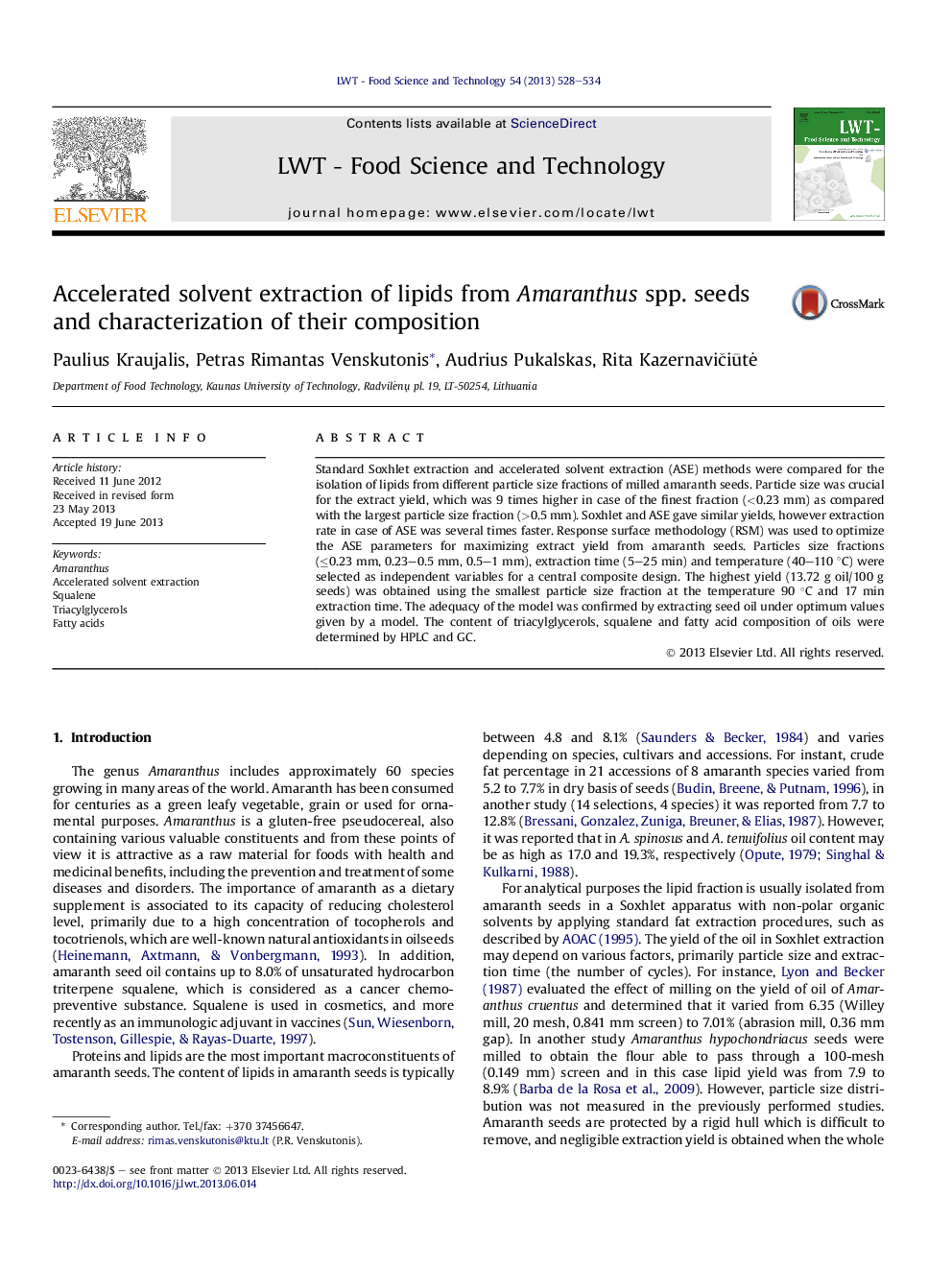| Article ID | Journal | Published Year | Pages | File Type |
|---|---|---|---|---|
| 6404619 | LWT - Food Science and Technology | 2013 | 7 Pages |
Abstract
Standard Soxhlet extraction and accelerated solvent extraction (ASE) methods were compared for the isolation of lipids from different particle size fractions of milled amaranth seeds. Particle size was crucial for the extract yield, which was 9 times higher in case of the finest fraction (<0.23 mm) as compared with the largest particle size fraction (>0.5 mm). Soxhlet and ASE gave similar yields, however extraction rate in case of ASE was several times faster. Response surface methodology (RSM) was used to optimize the ASE parameters for maximizing extract yield from amaranth seeds. Particles size fractions (â¤0.23 mm, 0.23-0.5 mm, 0.5-1 mm), extraction time (5-25 min) and temperature (40-110 °C) were selected as independent variables for a central composite design. The highest yield (13.72 g oil/100 g seeds) was obtained using the smallest particle size fraction at the temperature 90 °C and 17 min extraction time. The adequacy of the model was confirmed by extracting seed oil under optimum values given by a model. The content of triacylglycerols, squalene and fatty acid composition of oils were determined by HPLC and GC.
Related Topics
Life Sciences
Agricultural and Biological Sciences
Food Science
Authors
Paulius Kraujalis, Petras Rimantas Venskutonis, Audrius Pukalskas, Rita KazernaviÄiÅ«tÄ,
